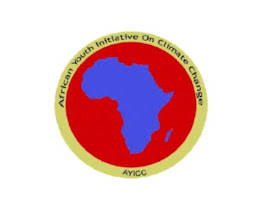Part 2: Battle Lines Are Drawn
This is going to
be a feisty piece, as hinted to by the topic! Part 1 covered the
formation of UN Framework Convention on Climate Change (UNFCCC). In the
second part of Peeling Back the COP series, we will cover the Climate Change Convention.
The Heart of
UNFCCC
The Climate
Change Convention (CCC) is the heart of UNFCCC, with everything else revolving
around it. It is interesting how the CCC came into being. As a refresher, you
may have heard of the 1985 Vienna Convention for the Protection of the Ozone as
well as the stellar 1987 Montreal Protocol on Substances that Deplete the OzoneLayer. These two conventions covered some Green House Gases (GHGs) that were
depleting the Ozone layer; however, there was emerging scientific evidence that
there were more gases that were doing more harm than good to the environment,
hence the need to tackle them. But then, there was a need to get continuous
scientific information that would inform policy formulation with regards to
reducing the GHGs.
Enter the Rock
Star: Intergovernmental Panel on Climate Change (IPCC)
IPCC is the
scientific body that has brought Climate Science to the Rock n Roll podium of
science: they even won the Nobel Prize! Anyways, as a first step towards
addressing the issue of the remaining GHGs, World Meteorological Organization
(WMO) and United Nations Environment Programme (UNEP) formed the IPCC in 1988.
Their mandate was to give the latest scientific research as well as how to
inform policy with regards to mitigation and adaptation of climate change.
The North –
South Divide
The findings by
IPCC showed that something needed to be done with regards to mitigating and
adapting to climate change, and the news was grim! As anticipated, this led to
divisions with countries identifying themselves either as “North” or “South”.
But hey, it was not all about the geographical location: it was all about
developed “North” and developing “South” countries. This divide was manifested
in the 2nd World Climate Conference in Geneva.
Issues! Issues!
Issues!
Just like human
relationships, there were issues that were involved in the “separation” of the
countries. The “South” countries blamed the “North” countries for being
supremely responsible for most of the GHG emissions since the Industrial Revolution. So, what did this mean? Well, it meant that the “North” countries
should take drastic steps towards reducing their emissions. In addition, developing
countries called on the developed ones to finance their climate mitigation and
adaptation activities. Whoa! This was a big issue as it caused the proverbial
“storm in a tea cup!”
Common but
Differentiated Responsibilities
There was a
consensus that action needed to be taken to combat climate change, and there
were general commitments that both developed and developing countries were
obligated to in responding to climate change. This principle simply observed
that all the countries faced common problems, although they were varying to
some degree. The next sensible thing to do was to classify countries: enter
Annex I, non-annex I and Annex II parties.
Annex Parties
You may have
heard the mention of Annex I parties in some jokes going around in AYICC,
especially during COPs (if not, just ask around!). In order to allocate responsibilities to countries in
addressing climate change through the reducing of GHGs, a classification system
was created. In essence, two main groups were formed: Annex I and non-Annex I
countries. Simply put, Annex I
countries are developed countries that have contributed most to GHG emissions
since the Industrial Revolution; there are now 41 countries listed. Non-Annex
II comprises of mostly developing countries. We will talk more on Annex I and
non-Annex I countries sooner than later!
Conclusion
Whoa! That was
quite a lengthy piece, but hopefully it is informative as well, and I hope that I
did not lose you along the way! The next piece will be about the good ol Kyoto protocol, so
stay tuned!
PS: As usual, if
you are interested in contributing to this COP series, please send an email to mbevakl@gmail.com and I will be glad to have you on board!
Useful links I
used in the research:
http://unfccc.int/essential_background/items/6031.php
http://unfccc.int/files/essential_background/background_publications_htmlpdf/application/pdf/conveng.pdf
Compiled by: Kennedy Liti Mbeva

Comments
Post a Comment